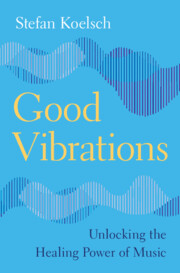Book contents
- Good Vibrations
- Cambridge Fundamentals of Neuroscience in Psychology
- Good Vibrations
- Copyright page
- Contents
- Preface
- Introduction
- Part One A World without Music Would Be a World without Humans
- Part Two Music and Emotions
- Part Three What Happens in the Brain when Music Evokes Emotions?
- Part Four How Music Helps with Illness
- Part Five In Conclusion
- Index
Introduction
Effects of Music on Health
Published online by Cambridge University Press: 01 May 2025
- Good Vibrations
- Cambridge Fundamentals of Neuroscience in Psychology
- Good Vibrations
- Copyright page
- Contents
- Preface
- Introduction
- Part One A World without Music Would Be a World without Humans
- Part Two Music and Emotions
- Part Three What Happens in the Brain when Music Evokes Emotions?
- Part Four How Music Helps with Illness
- Part Five In Conclusion
- Index
Summary
This chapter introduces the transformative power of music through the inspiring story of Michael, a young man with epilepsy and mutism who experienced remarkable progress through music therapy. It highlights the growing body of research on music’s therapeutic effects, while acknowledging the challenges of studying music’s impact in a rigorous scientific manner. The author emphasizes the importance of integrating music therapy into healthcare, advocating for policy changes to increase access for those in need. This chapter sets the stage for exploring the multifaceted ways music can enhance our health and well-being, drawing on insights from neuroscience, psychology, medicine, and musicology. It invites readers on a journey to discover the extraordinary potential of music to heal, inspire, and transform lives.
Keywords
Information
- Type
- Chapter
- Information
- Good VibrationsUnlocking the Healing Power of Music, pp. 1 - 6Publisher: Cambridge University PressPrint publication year: 2025
